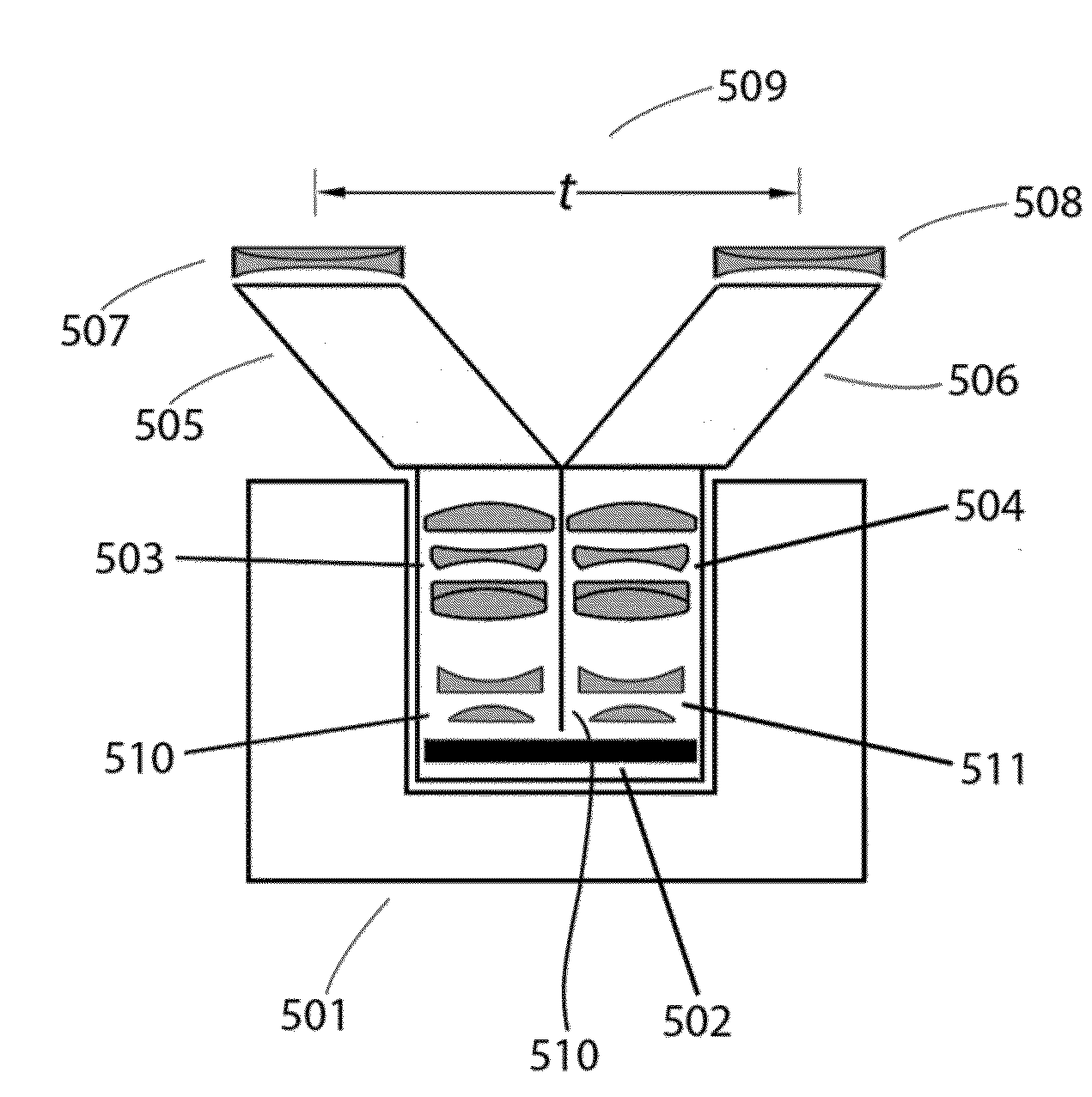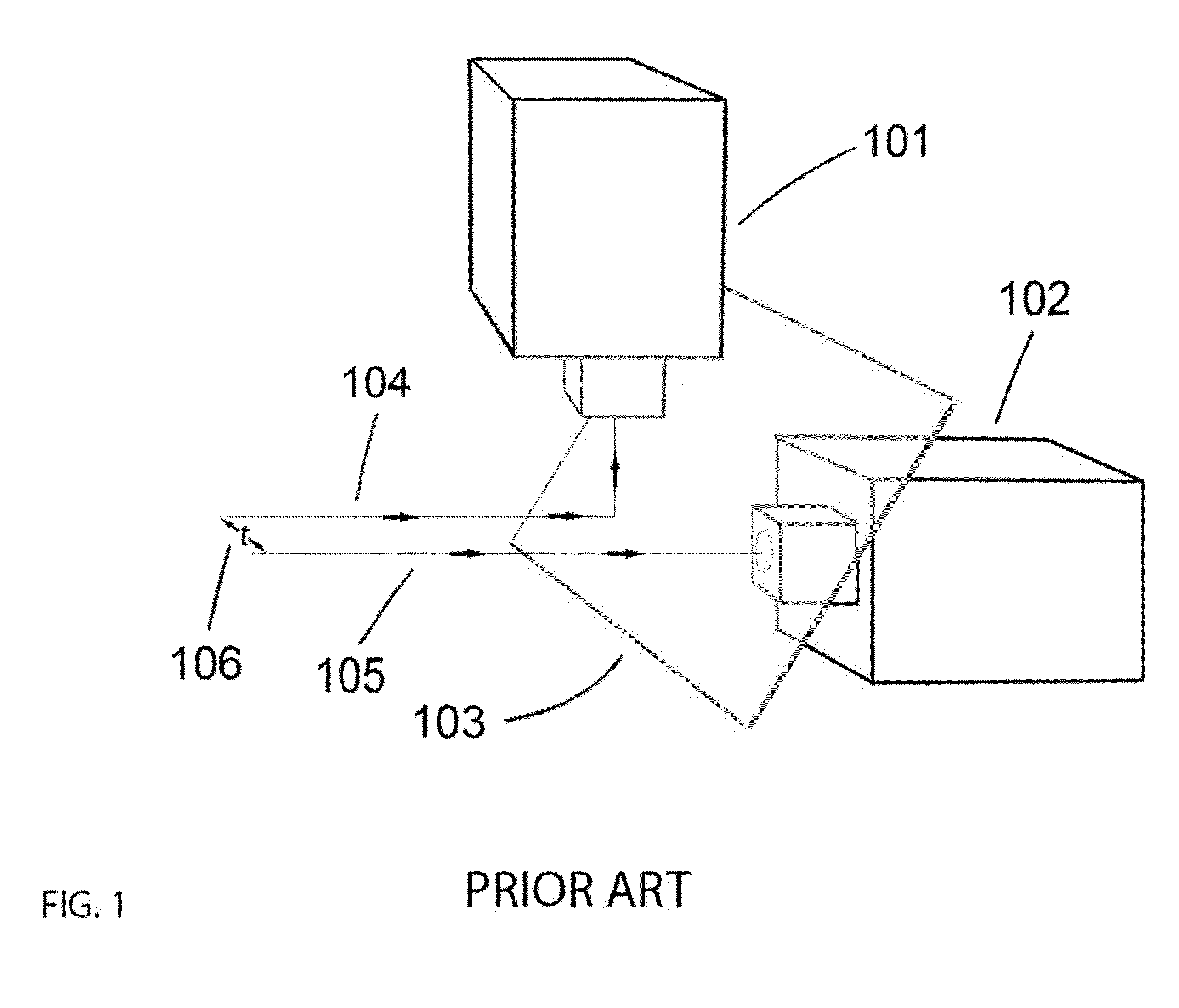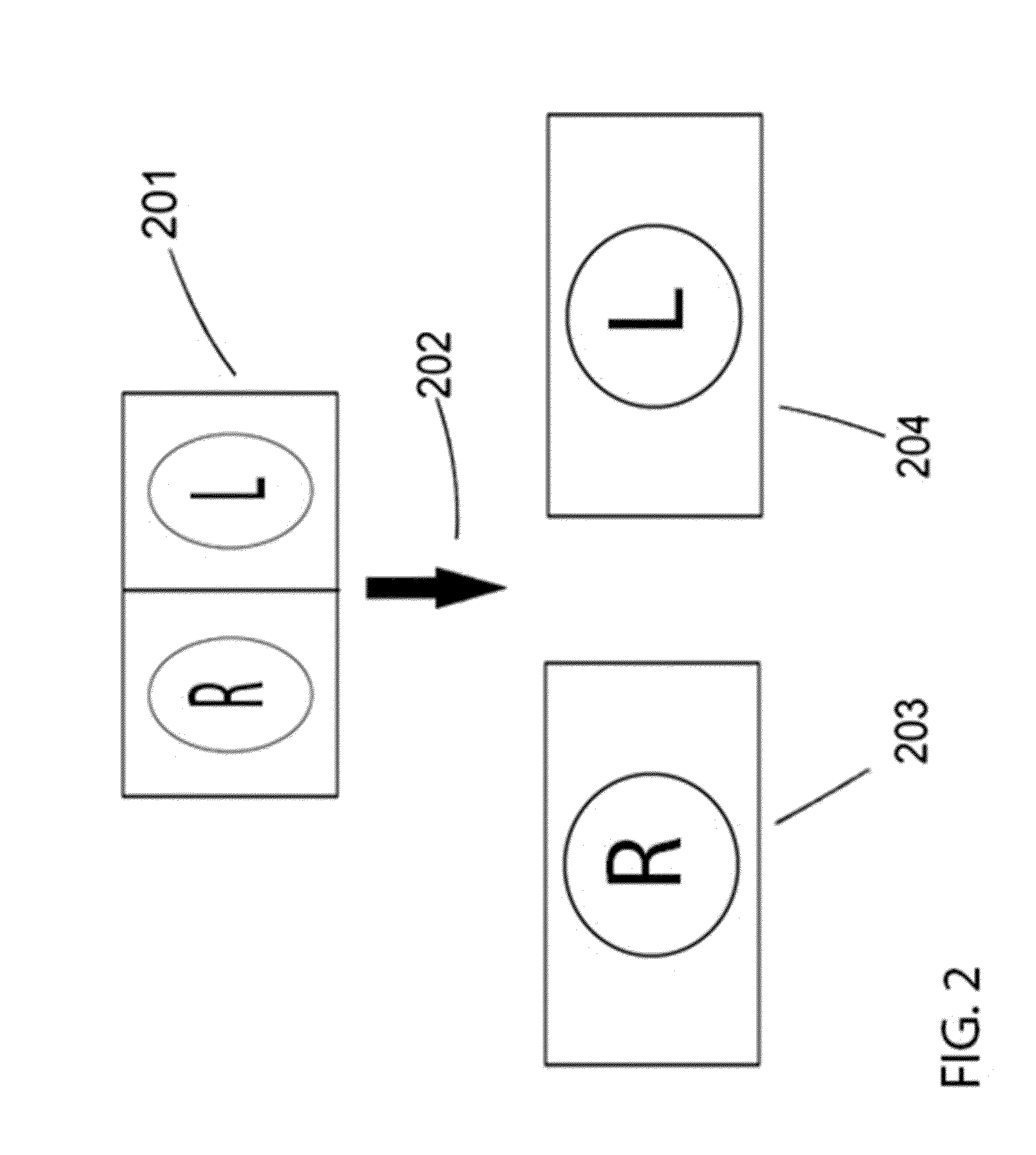Stereoscopic lens for digital cameras
a technology of stereoscopic lenses and digital cameras, applied in the field of stereoscopic lenses, can solve the problems of affecting the effect of the image quality of the image, the inconvenience of the majority of people, and the inability to achieve the effect of achieving the effect of reducing the difficulty of focusing
- Summary
- Abstract
- Description
- Claims
- Application Information
AI Technical Summary
Benefits of technology
Problems solved by technology
Method used
Image
Examples
Embodiment Construction
[0025]The present design seeks to provide an optical solution alternative to the rigs and to conversion in order by using a single unmodified digital camera for 3D cinematography.
[0026]In the past attempts to solve the problem of stereoscopic cinematography using a single camera for theatrical motion picture work has been attempted by a number of inventors such as Condon (U.S. Pat No. 4,464,028), Hoch (U.S. Pat. No. 3,825,328, and Bielusici (U.S. Pat No. 3,551,036). These efforts are prior to the advent of the digital cinema and therefore could not take advantages of that technology. The current design takes advantage of changes to filmmaking technology principally in two ways: the lens mount system used for modern digital cinema cameras is more or less the same as that which was used for cinematography using 35 mm film and reflex motion picture cameras, but for modern digital cameras there is no mirror reflex system and therefore the area from the lens mount itself to the image sen...
PUM
 Login to View More
Login to View More Abstract
Description
Claims
Application Information
 Login to View More
Login to View More - R&D
- Intellectual Property
- Life Sciences
- Materials
- Tech Scout
- Unparalleled Data Quality
- Higher Quality Content
- 60% Fewer Hallucinations
Browse by: Latest US Patents, China's latest patents, Technical Efficacy Thesaurus, Application Domain, Technology Topic, Popular Technical Reports.
© 2025 PatSnap. All rights reserved.Legal|Privacy policy|Modern Slavery Act Transparency Statement|Sitemap|About US| Contact US: help@patsnap.com



